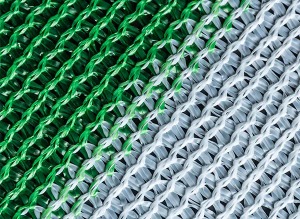Farming is no longer just about soil and water; it’s also about managing environmental conditions effectively. With climate change and unpredictable weather patterns, modern farmers need reliable tools to protect their crops and improve yield. One such indispensable tool is the sun shade net.

A sun shade net is a mesh fabric designed to provide shade and control sunlight exposure, particularly in agricultural environments. It plays a crucial role in regulating temperature and light intensity, helping crops grow in a controlled, protected setting. With global temperatures on the rise, using a sun shade net has become more important than ever.
The main advantage of using a sun shade net in agriculture is its ability to reduce heat stress in plants. Excessive sunlight can cause leaf burn, wilting, and stunted growth. By installing a sun shade net over fields, greenhouses, or garden beds, farmers can reduce the intensity of sunlight and create a more suitable environment for plant development.
Different crops require different levels of shading. Fortunately, sun shade net products come in varying densities — usually measured in percentages such as 30%, 50%, 70%, and even 90%. For example, vegetables like lettuce or spinach benefit from moderate shading (30%-50%), while ornamental flowers may require more. Selecting the right sun shade net can significantly influence crop quality and quantity.
Beyond protecting against heat, a sun shade net also acts as a physical shield against external elements. It can block birds, insects, wind, and even hail, reducing the risk of physical damage to crops. In areas with intense weather, this added layer of protection can be the difference between a good harvest and a failed one.
Another practical application of the sun shade net is in nurseries and seedling propagation areas. Young plants are particularly sensitive to environmental stressors. Providing consistent shading helps ensure higher germination rates and stronger seedling development. This stage is crucial for overall farm productivity, and the sun shade net plays a key role.
Greenhouse farming has especially benefited from the use of sun shade nets. By installing them on the roof or sides of the greenhouse, farmers can adjust the interior conditions without relying solely on mechanical cooling systems. This not only reduces operational costs but also supports a more sustainable farming approach.
Livestock care is another area where the sun shade net finds relevance. Animals, like plants, are vulnerable to heat stress. By setting up shaded areas using nets, farmers can protect animals from direct sun, promoting better health and higher productivity in dairy, poultry, and meat farms.
Installation and maintenance of a sun shade net are simple. The material is generally lightweight, UV-resistant, and durable. It can be mounted using poles, wires, or frames, and is easy to remove or adjust according to seasonal requirements. Because of its reusability, the sun shade net offers good value over time.
In addition to functional benefits, a sun shade net can also support sustainable farming. By reducing the need for chemical pest control and mechanical cooling, it minimizes environmental impact. Many farmers are now turning to such eco-friendly solutions as part of broader sustainable agriculture practices.
The sun shade net is more than just a cover — it’s an essential agricultural tool that enhances crop protection, supports animal welfare, and promotes efficiency. With the growing need for climate-resilient farming solutions, this netting system is proving to be a low-cost, high-impact investment. Every modern farmer looking to improve yield and sustainability should consider integrating a sun shade net into their operation.



 英语
英语 西班牙语
西班牙语










